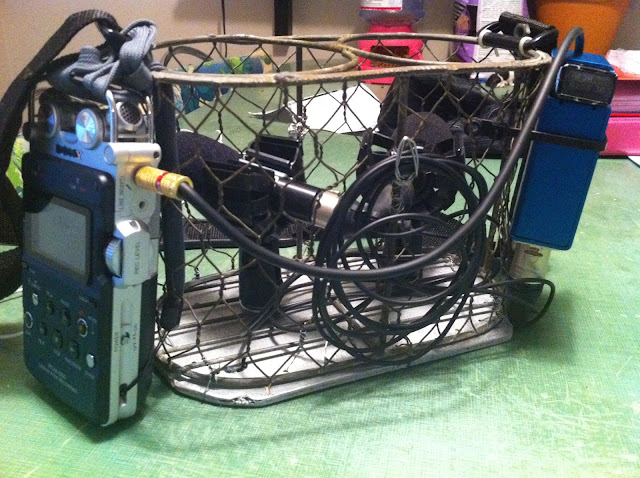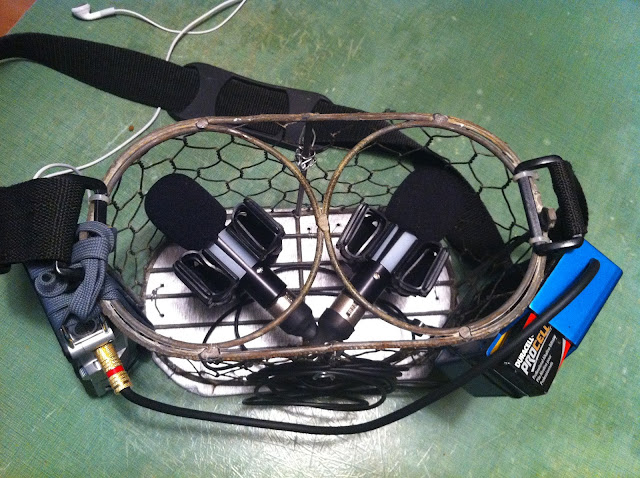with all of the groundwork laid it’s time to make the hard decisions.
There are four things that you have to set in order to launch a kickstarter, and once you set those four things you can’t change them, so you really have to do your homework before committing to those numbers.
Lets start with the first and most difficult.
---your financial goal---Setting a target goal is one of the trickiest aspects of launching a kickstarter. Set the goal too low and you may end up reaching into your own pocket in order to deliver on your promises to your backers. Set the goal too high and you risk not getting funded.
Here’s how I approached it:
First, calculate your expenses. For the purposes of this project I had a charter fee of $150, a planned gratuity of $40 for my motorman, and a small budget of $100 or so for gear rental, food/drink, and other minor expenses. I knew that delivery of the final assets wouldn’t cost me anything, but if you’re planning on delivering anything to your backers that costs any money to produce, be sure to factor that in to your expenses.
My total added up to $290.
Next I had to factor in the fees that both KS and Amazon payments were going to charge. Kickstarter takes a flat 5%, and Amazon takes somewhere between 3% and 5%. I decided to just assume that 10% was coming off the top. The proper math for this is to take your expenses (E) and to DIVIDE that number by 0.9.
To reiterate, your financial goal should equal E ÷ (0.9)
In my case 290/(0.9) = $322.22 I rounded the number to $325 and called it a day. $325 * 0.9 = $292.50, so I knew if I hit my goal I was going to be able to execute the project.
Time to define the next part of the project.
---your rewards---I figured this would be pretty simple, and for many sfx style recordings it should be. I planned to deliver a fully fleshed out library of trolley sounds at various resolutions for the various backer levels. I would include photos and metadata.
Fortunately, much of the technology and indie sfx market has settled in on what are the general standards.
In my case I went with:
256k mp3s
44k 16 bit wav
24 bit 96k wav
and 24 bit 96k with broken out mic layers for the top tier.
The other thing that I offered was complete exclusivity. This meant that I would not put these sounds up for sale in the future, and you could only get access to them if you backed the project. I went with the total exclusivity route because I wanted to do everything I could to make sure the project got funded. In the future I’d probably go to some form of limited exclusivity given the results of this first effort.
The thing to remember is that once these specific rewards are set they cannot be changed, so consider carefully exactly what you want to give away and how you want to do it.
Also, its important to consider delivery costs. In my case I had access to an ftp that I was able to set unique passwords for, but in some cases you may want to budget for a delivery service or medium.
Rewards were set, another big decision in front of me.
---your backer levels---Again, in this case I’m fortunate in that the indie sfx community has basically put up some general pricing standards that backers would be familiar with.
I swam around it a bit and came up with the following pricing:
$1 for thanks
$5 for the mp3s
$15 for the 44k wavs
$25 for the 96k wavs
$40 for the 96k wavs with broken out individual mics
$120 for the 96k wav with borken out mics and a personal meetup
I assumed that everyone would gravitate towards one or two levels, so I calculated how many backers in each level it would take to fund my goal on its own:
65 $5 backers or
21 $15 backers or
13 $25 backers or
9 $40 backers or
3 $120 backers
Looking it over I felt that I could pretty safely assume 9 $40 backers, or at least 5 or 6 and then a few $25 backers to make the diff, so my pricing ended up looking pretty doable.
I also honestly thought that the $5 level was the biggest bargain and could possibly skew my numbers too far down, but the network of people that got the message on this project skewed much more towards the sound designer crowd, so that helped me out tremendously.
with my goal, rewards and levels set I had one more critical decision to make.
---your deadline---In kickstarter, deadlines are less defined by dates than by time periods. you can go anywhere from 1 to 60 days out.
One important thing to keep in mind when setting a deadline is that there is a time-lag in between the deadline passing and the funds from a successful kickstarter hitting your operational account.
Kickstarter does not start transferring you money the moment you meet your goal. In fact, it does not charge your backer’s credit cards until the deadline date that you set, so if you hit your goal early (as I did) you still have to wait until your deadline passes before payment processing begins.
Kickstarter advises that it can take up to 14 days to process all of the payments and transfer them to your amazon business account. You then have to account for the 3-5 business days it takes to move funds from amazon into your operational account. This all happens AFTER your projects deadline passes.
That means if I set a deadline that’s 30 days out, it could be as many as 45 days before I can gain access to the backer’s funding needed to execute the projectIn my case, 80% of the backers funds transferred into my amazon account on the day of my deadline and the transfer out to my operational account also only took one day, so I got my funds very quickly compared to their predictions, but I’d still approach timing with regards to seeing the funding with extreme caution.
The other complicating factor there is time frame with regards to booking the trains. I couldn’t confirm a date with them until I had reached my funding goal, and they required a two week lead time. Fortunately I reached my goal quickly and was able to book the train pretty much right away, but if I had been in a huge funding push to reach the goal at the end it would have added two weeks to my turnaround time.
All of this is to say that Kickstarter is in no way an instant gratification kind of thing for you or for your backers. It’s a process, and that process takes days and weeks to get done just from pure logistics, so be sure that your backers and vendors are informed and updated as to what’s going on behind the scenes.
With all of that under consideration I chose a deadline date of 21 days out, mainly to give potential backers a chance to get a paycheck in set some $ for the project aside. Even though I funded much more quickly than that I’m pretty happy with the total time I ended up choosing.
---final thoughts---once these decisions are made they are no longer in your control. It's as though you set them into a boat and floated them out to sea, and now you have to chase them all down.
This means you really have to do your homework on the front end with regards to monetary needs, timeframe commitments, and vendor bookings. It also means constant communication with both your vendors and backers.
If you mess these decisions up it could be the difference between a successful project and a failure, so triple check your work and then send it off!


































